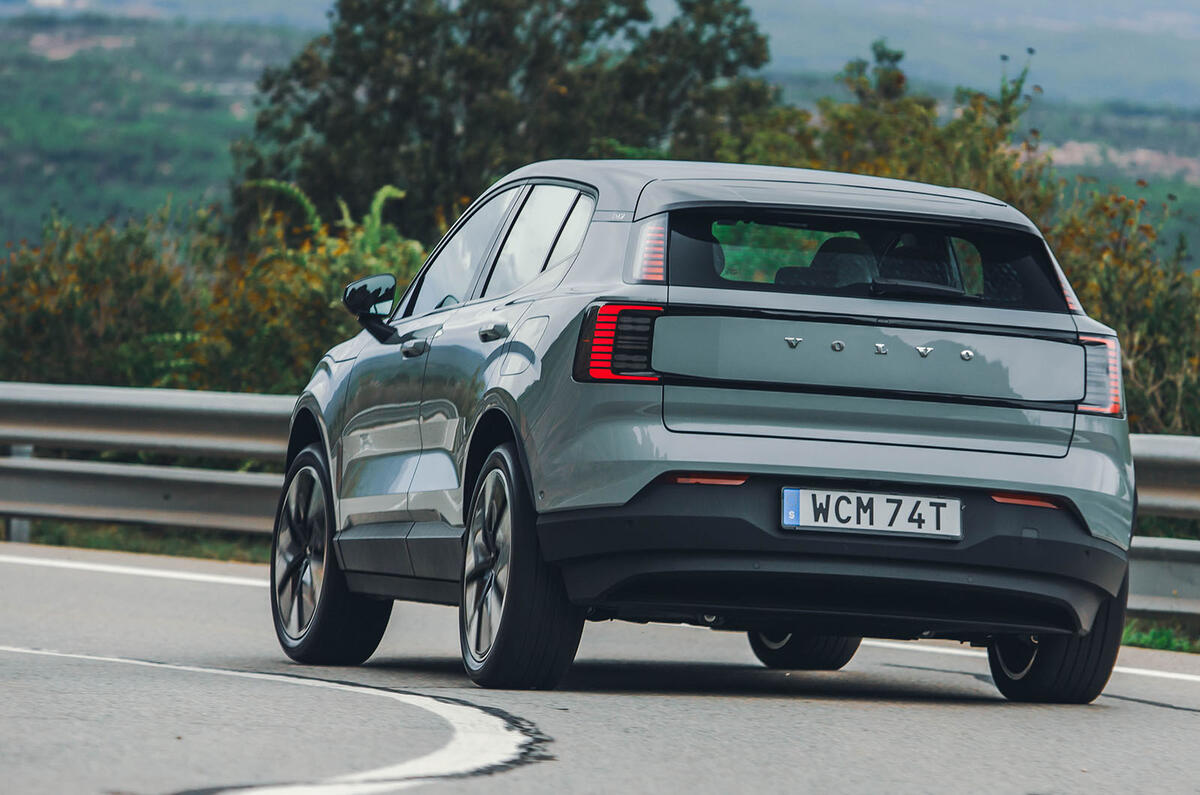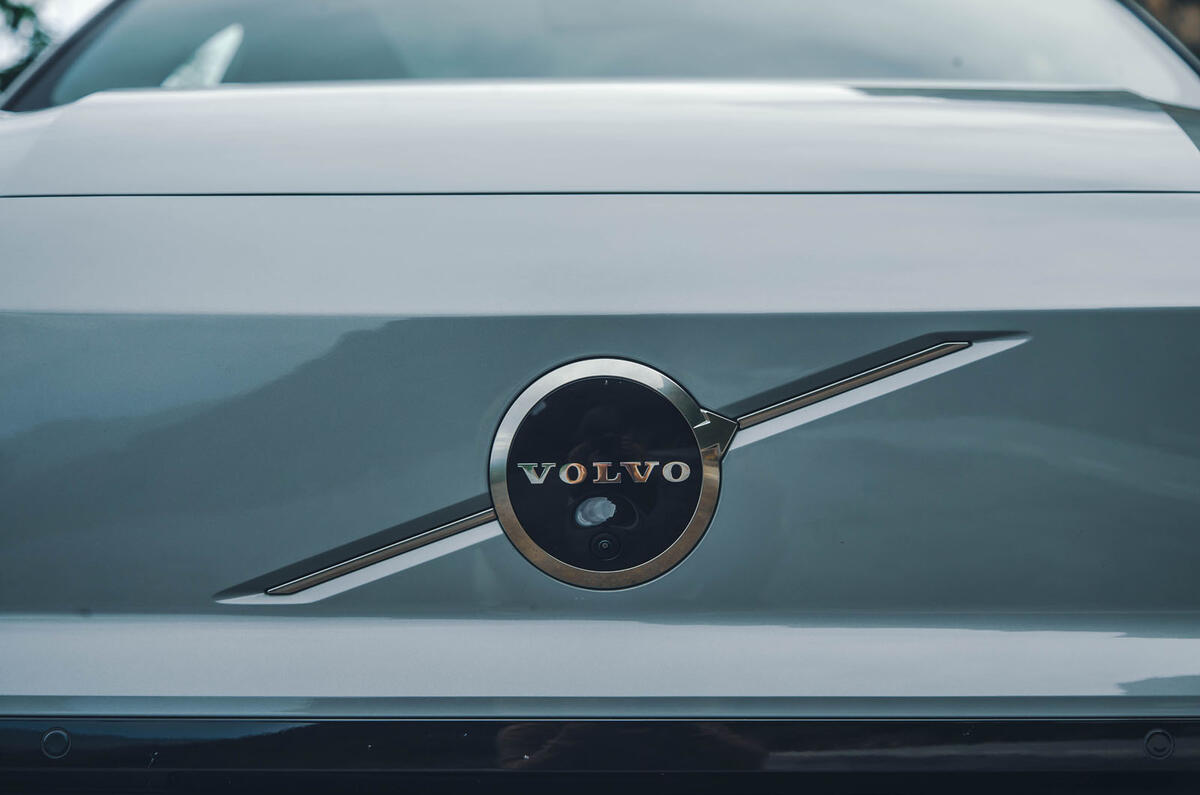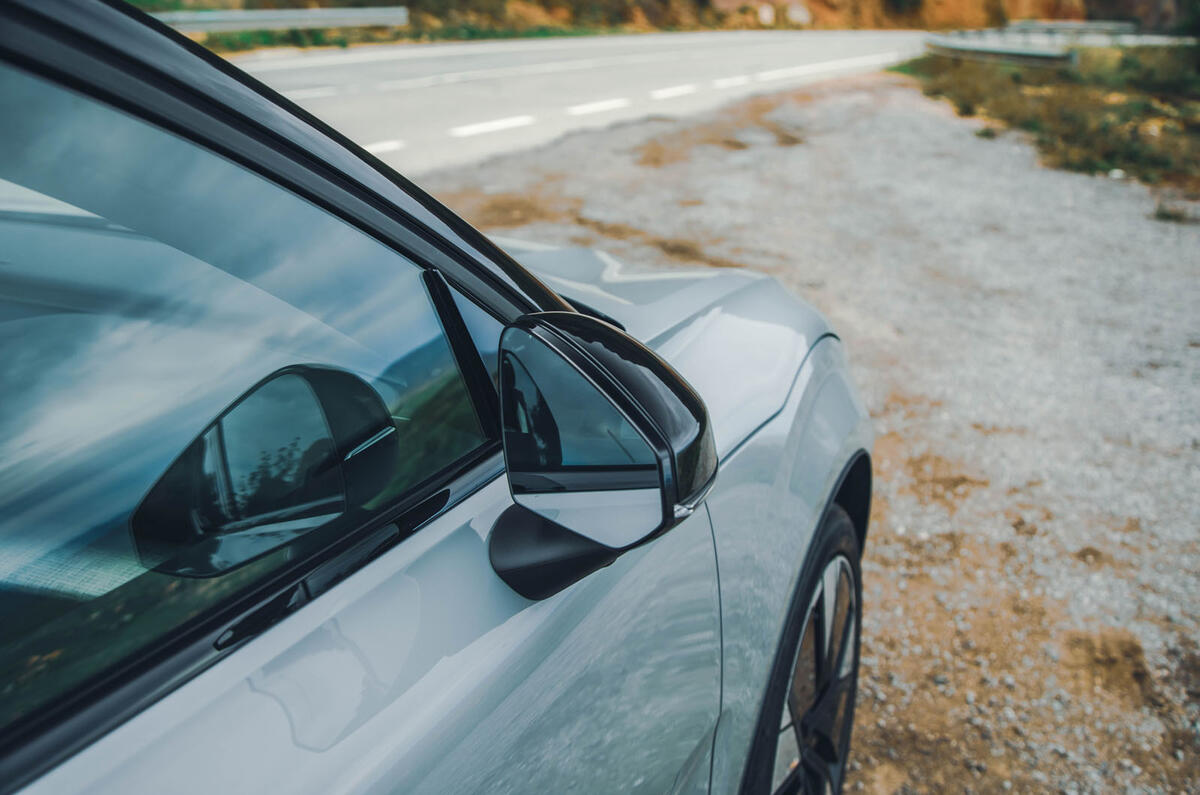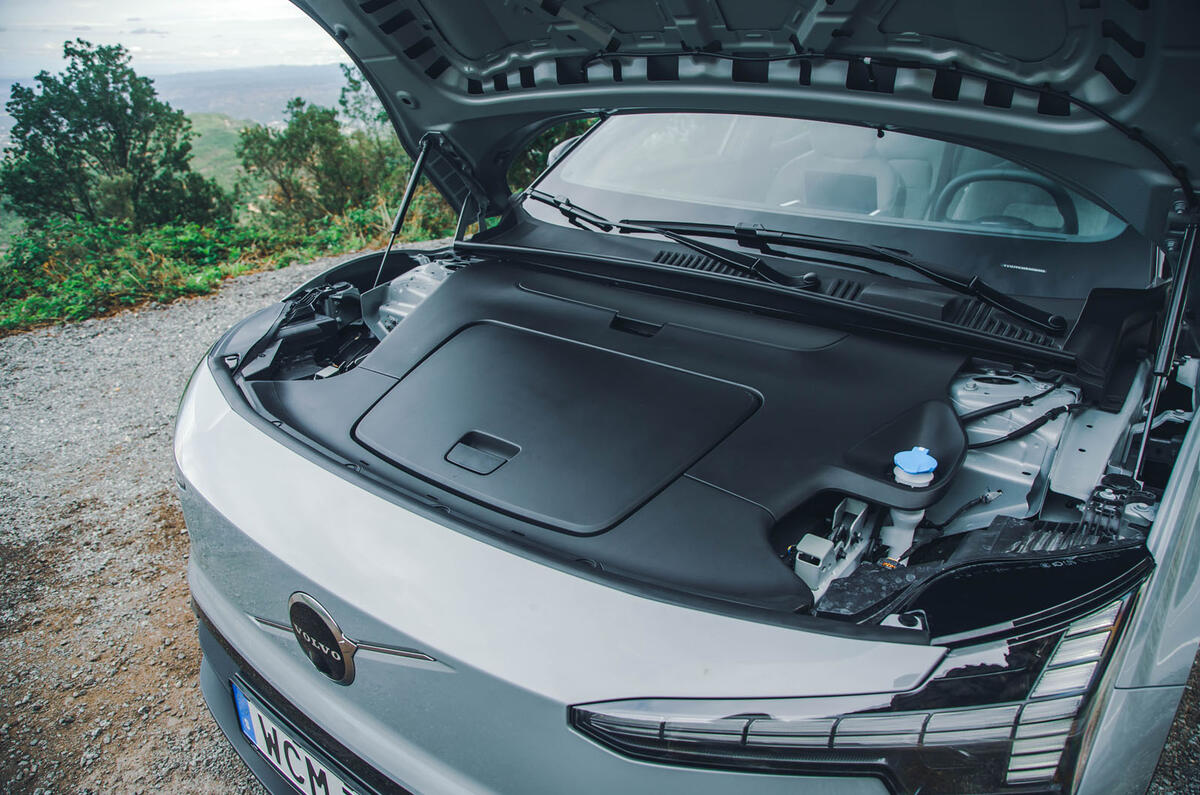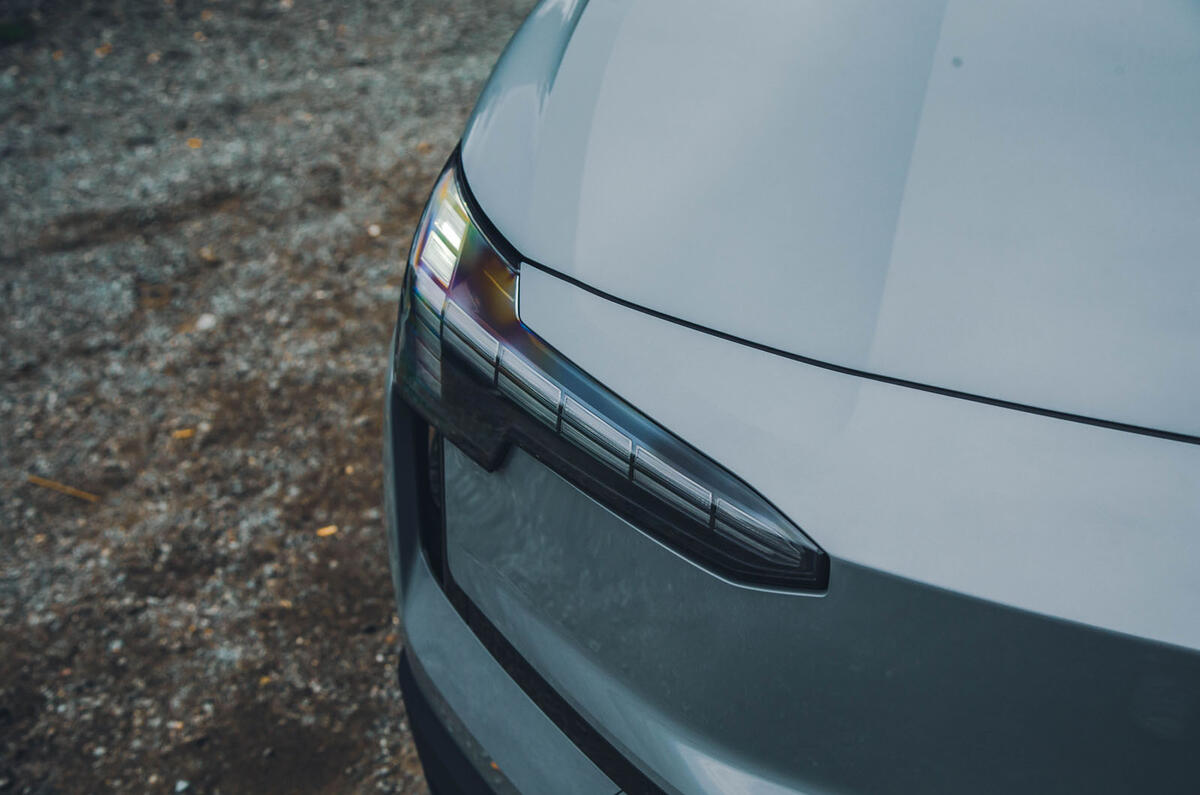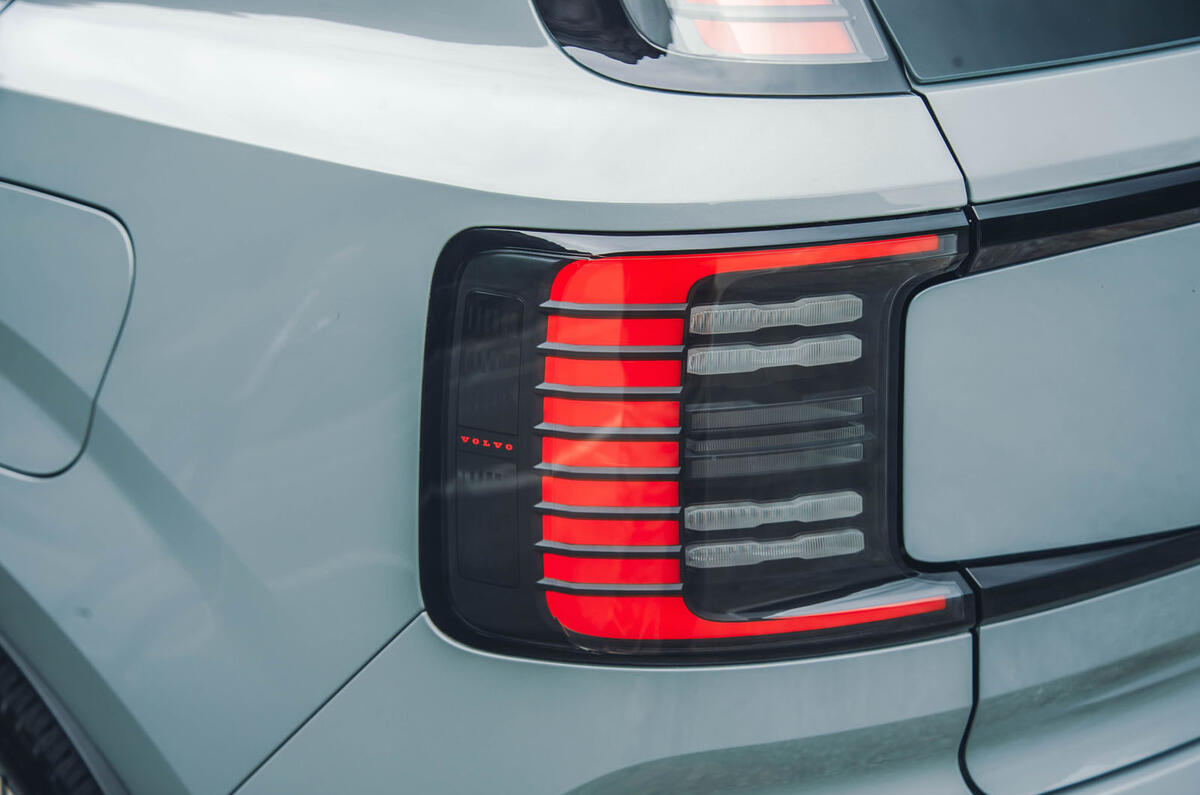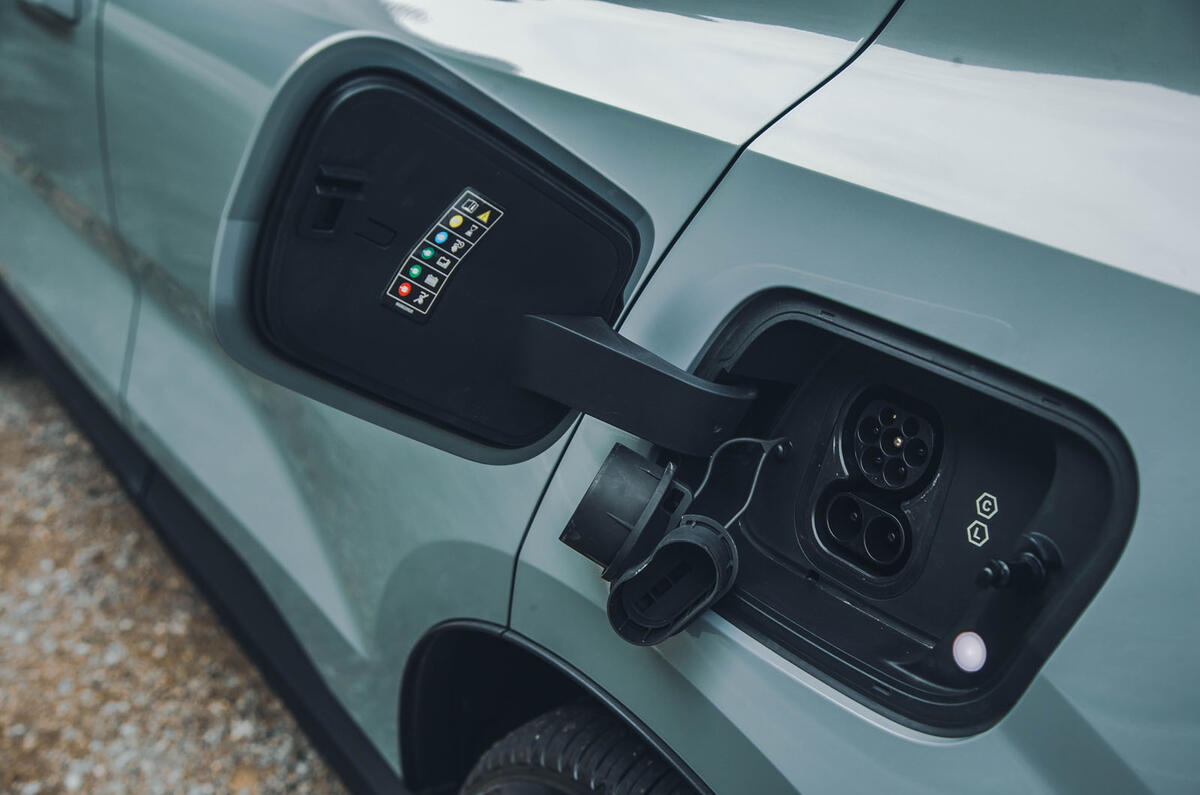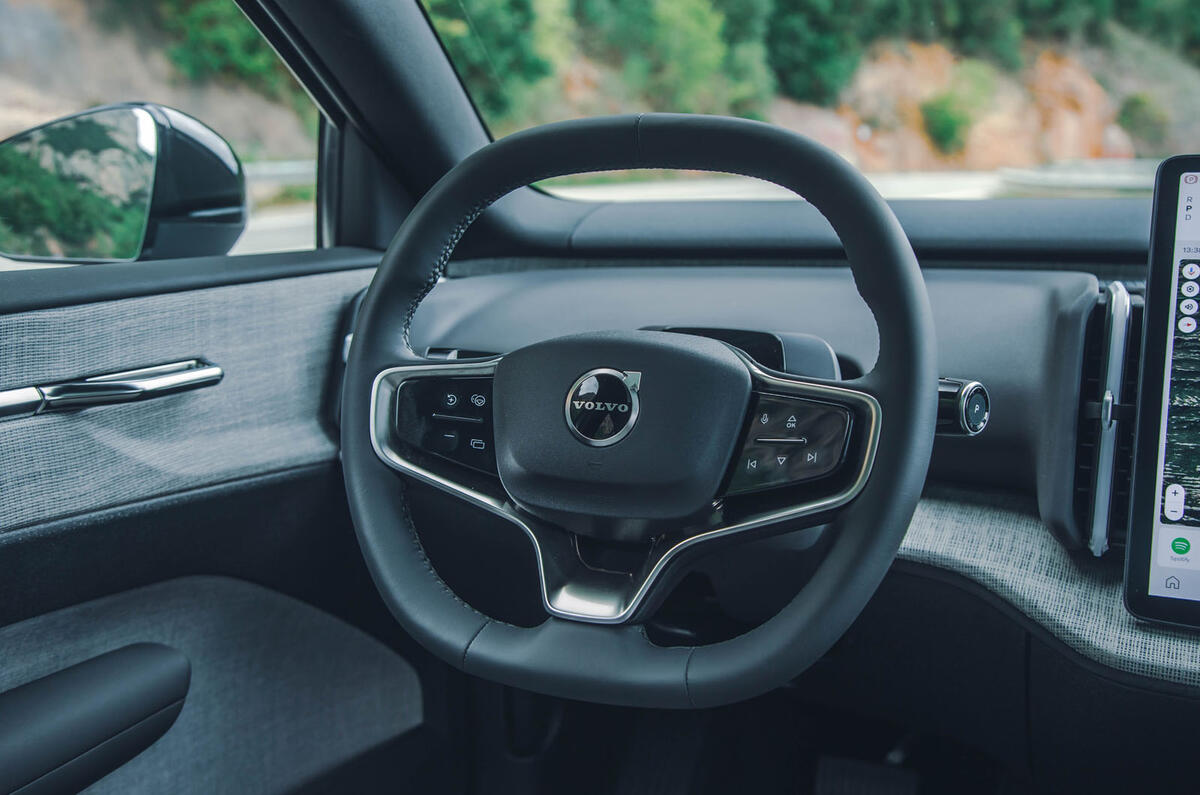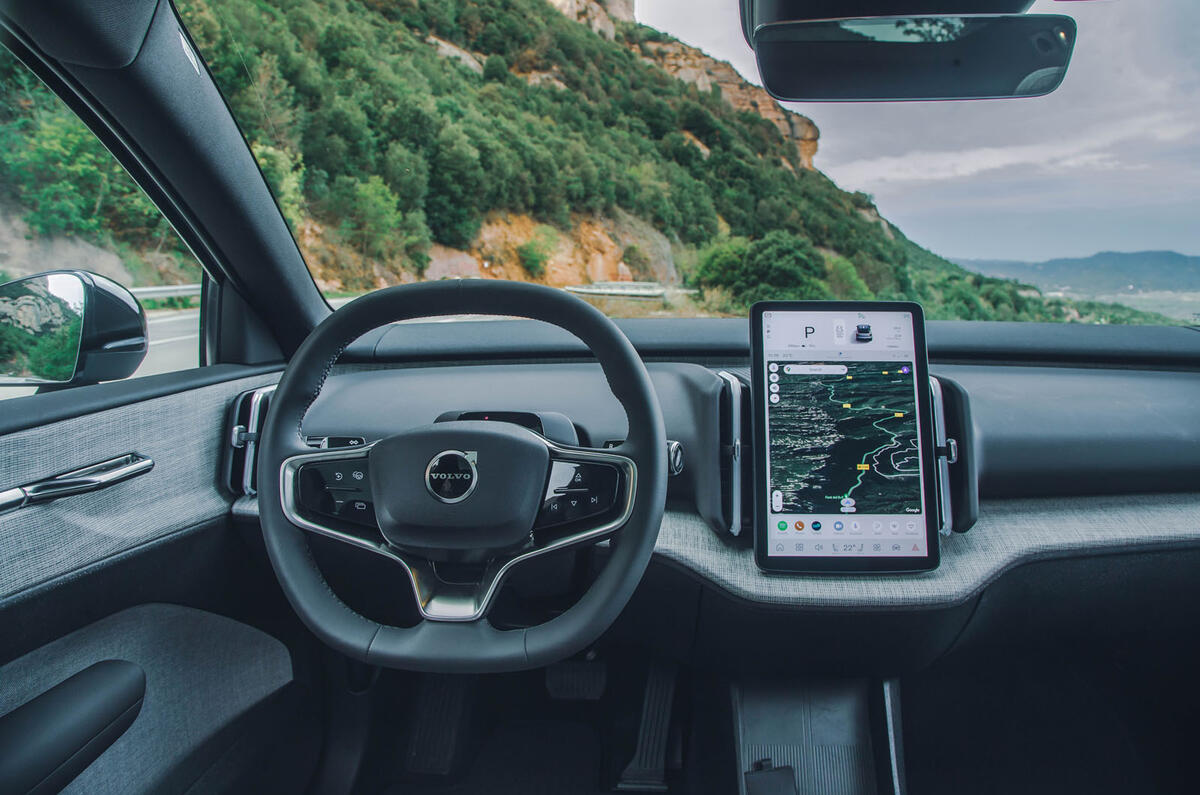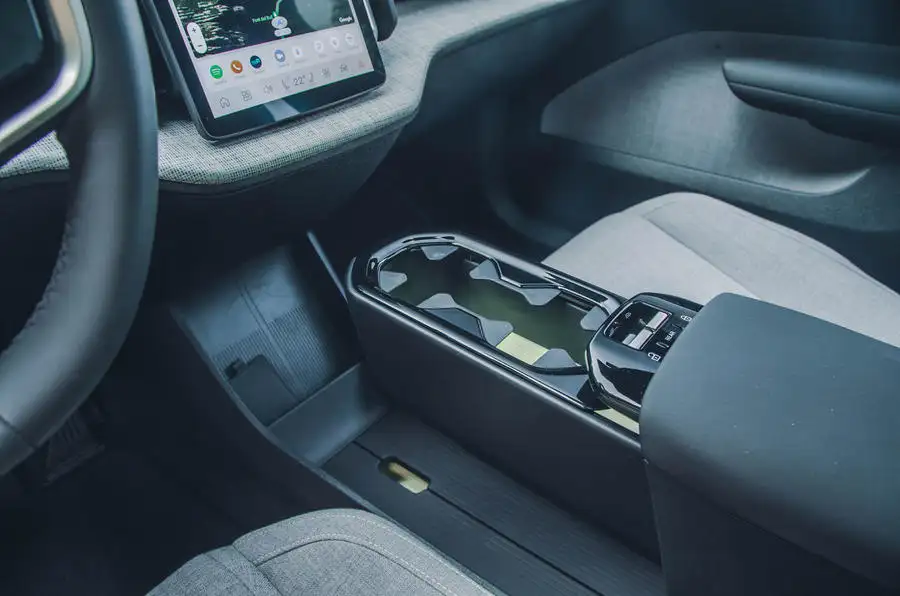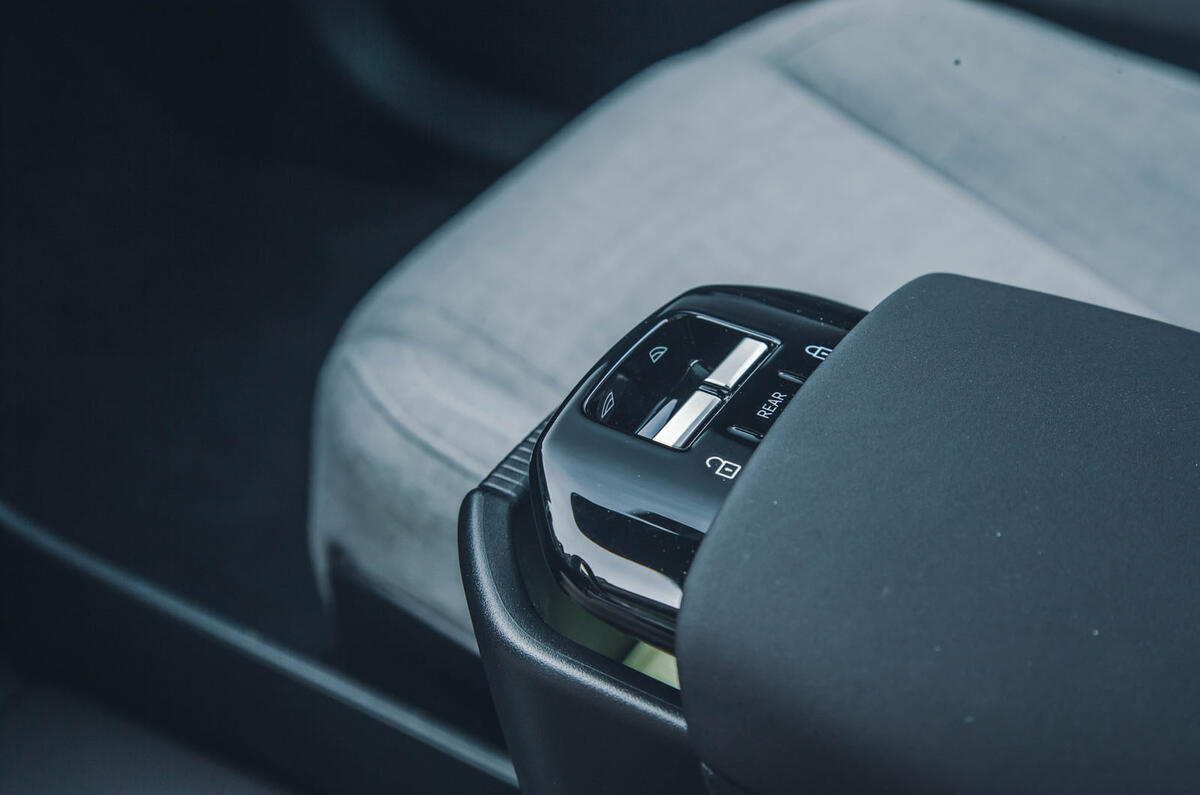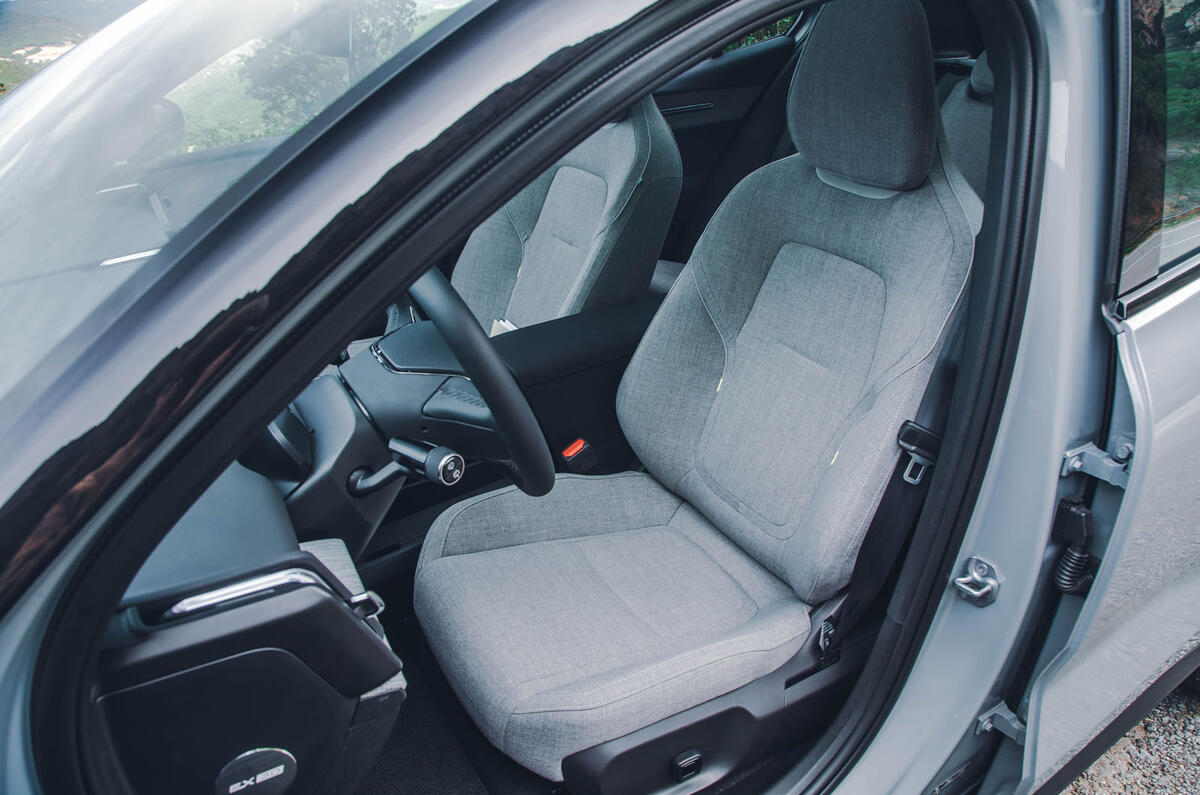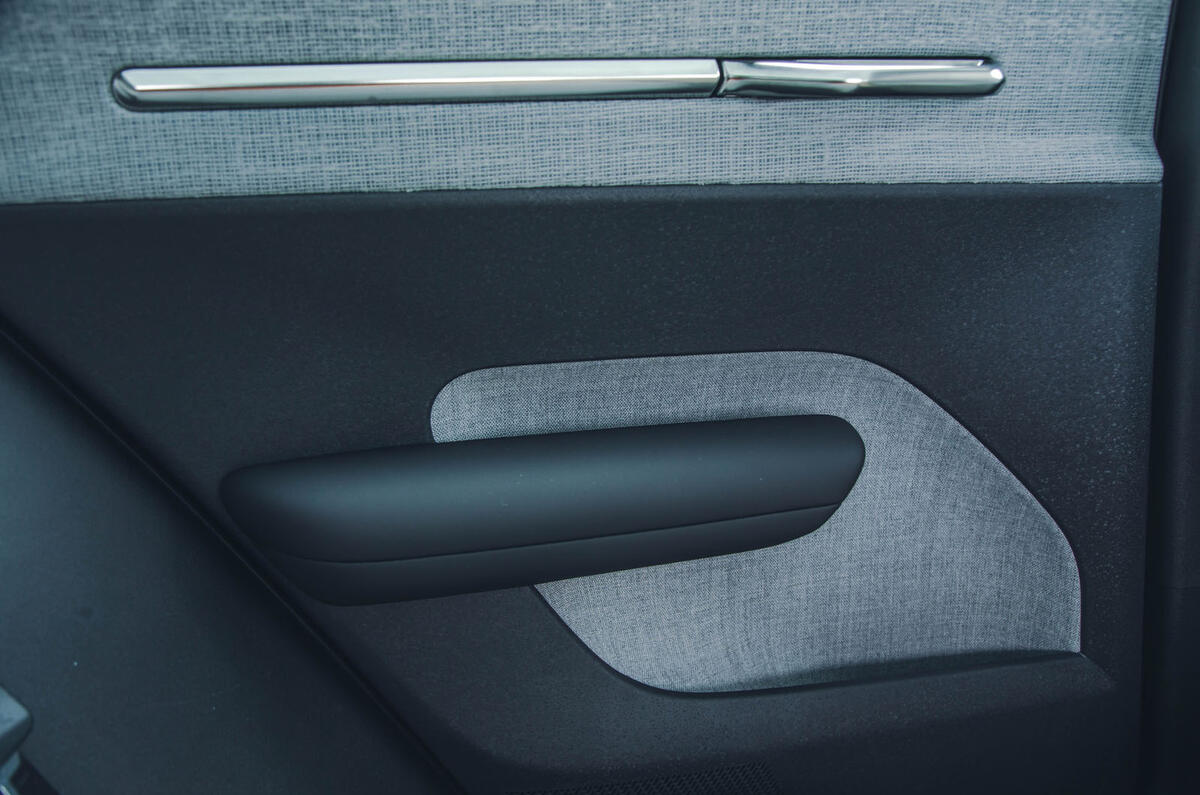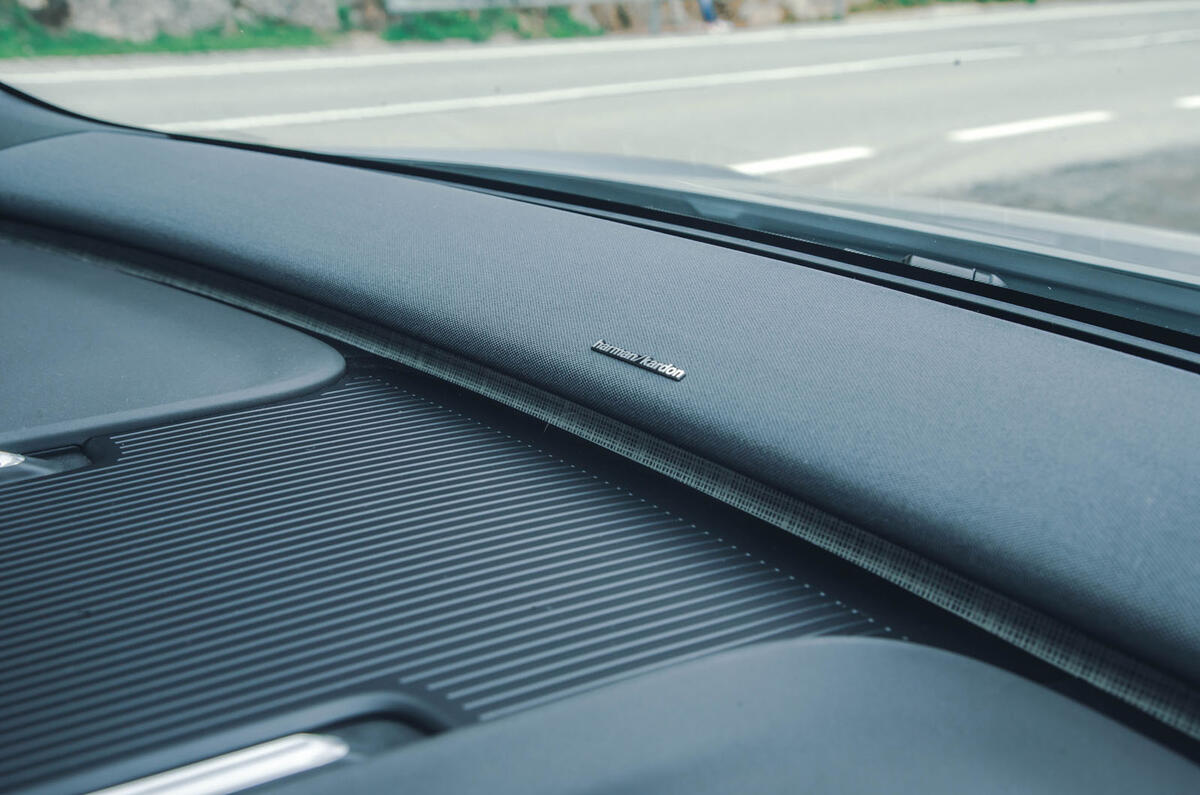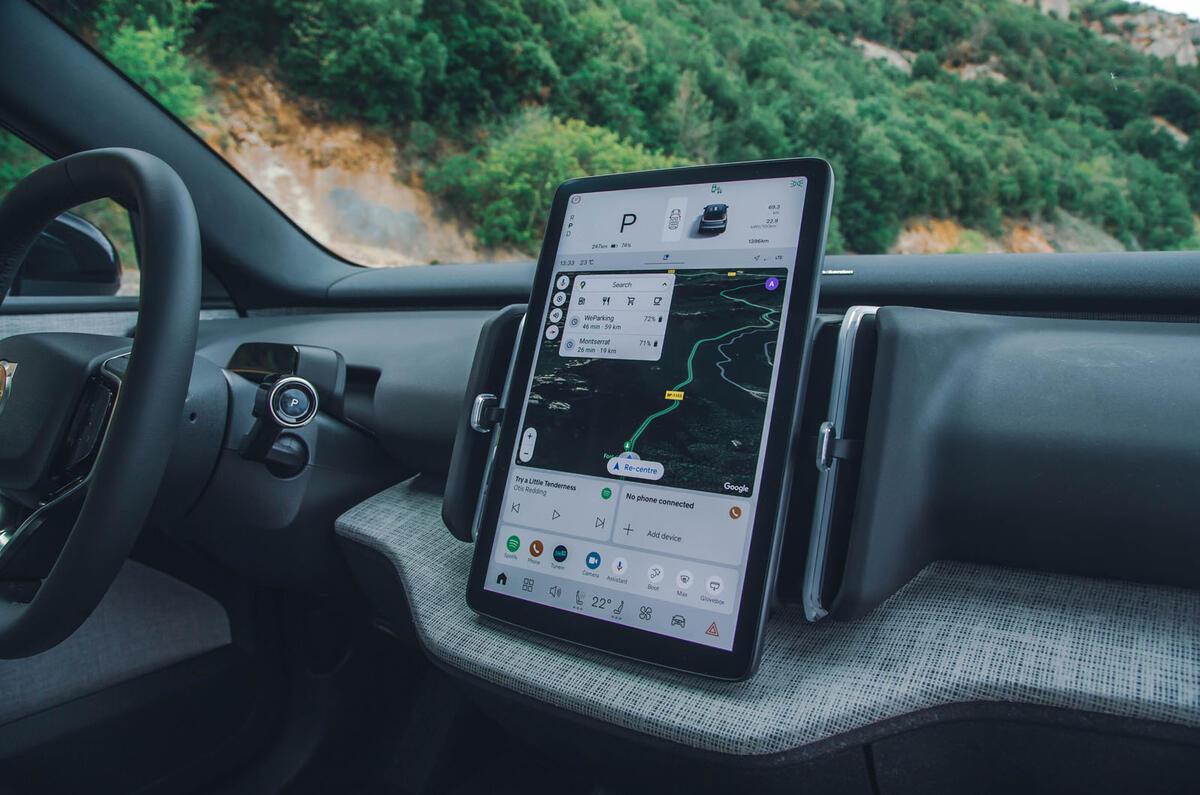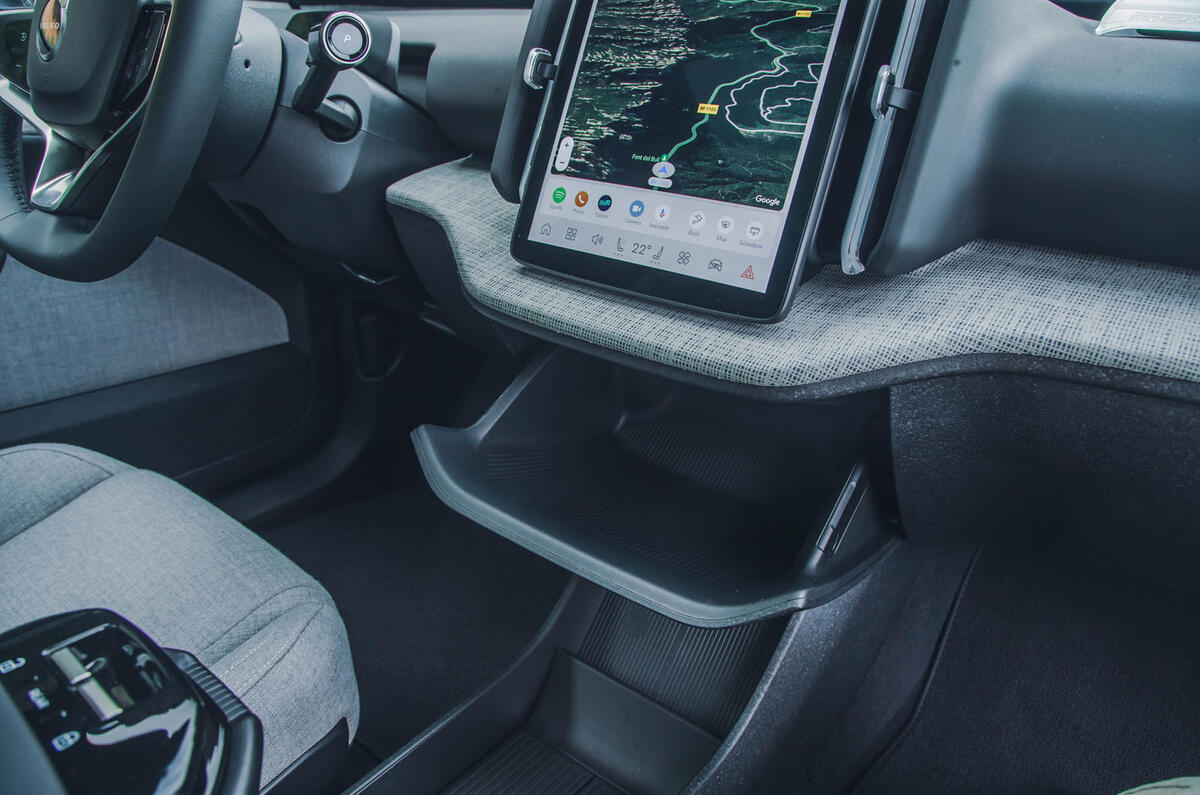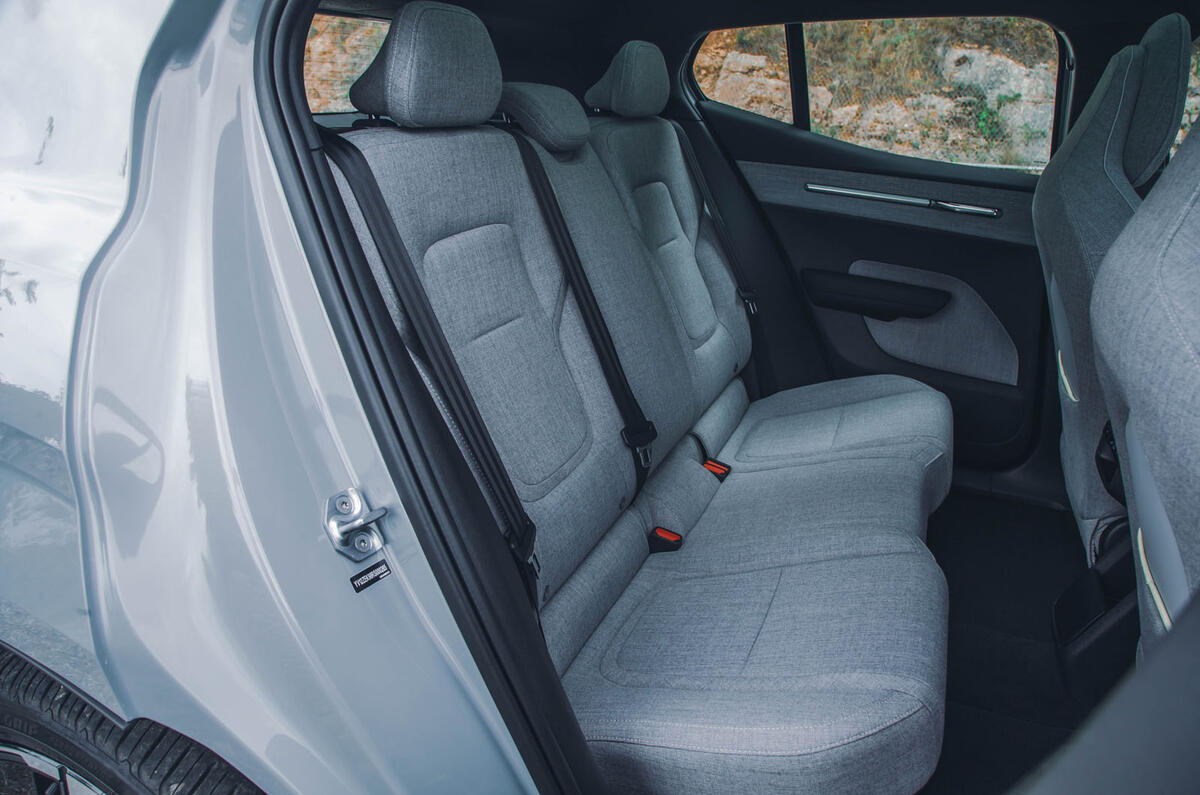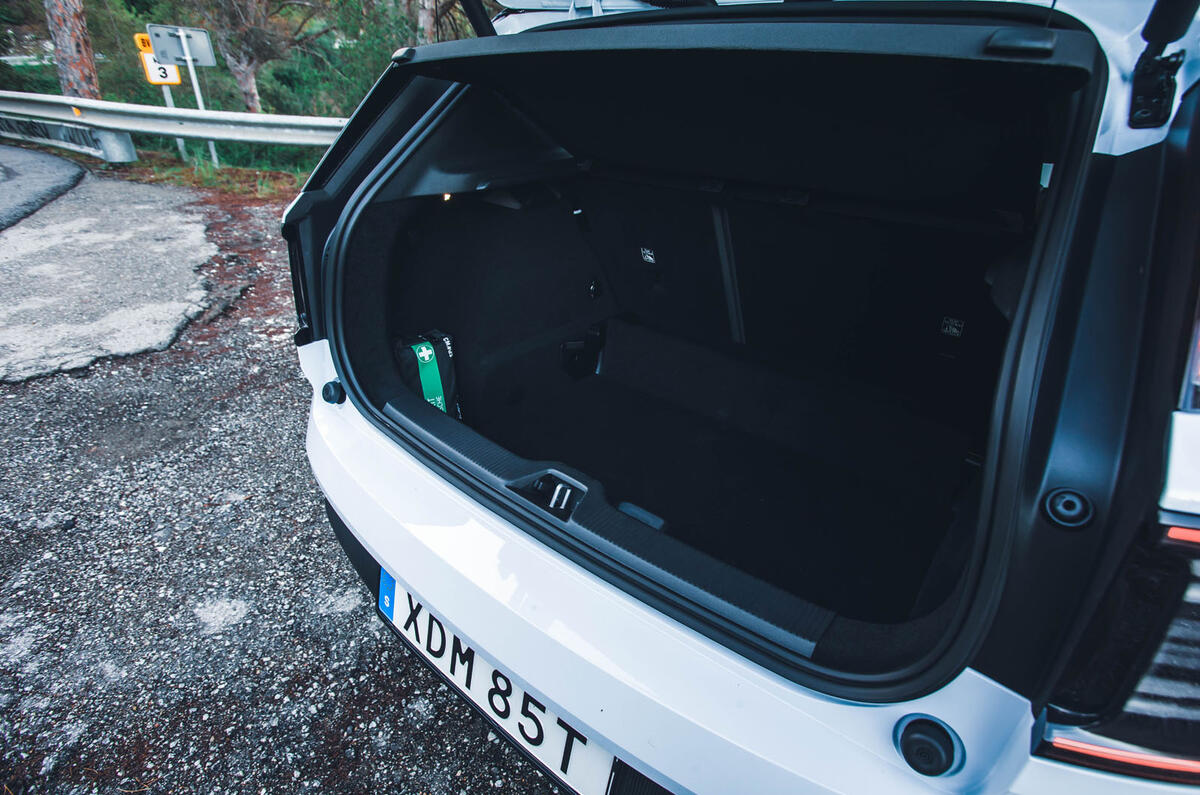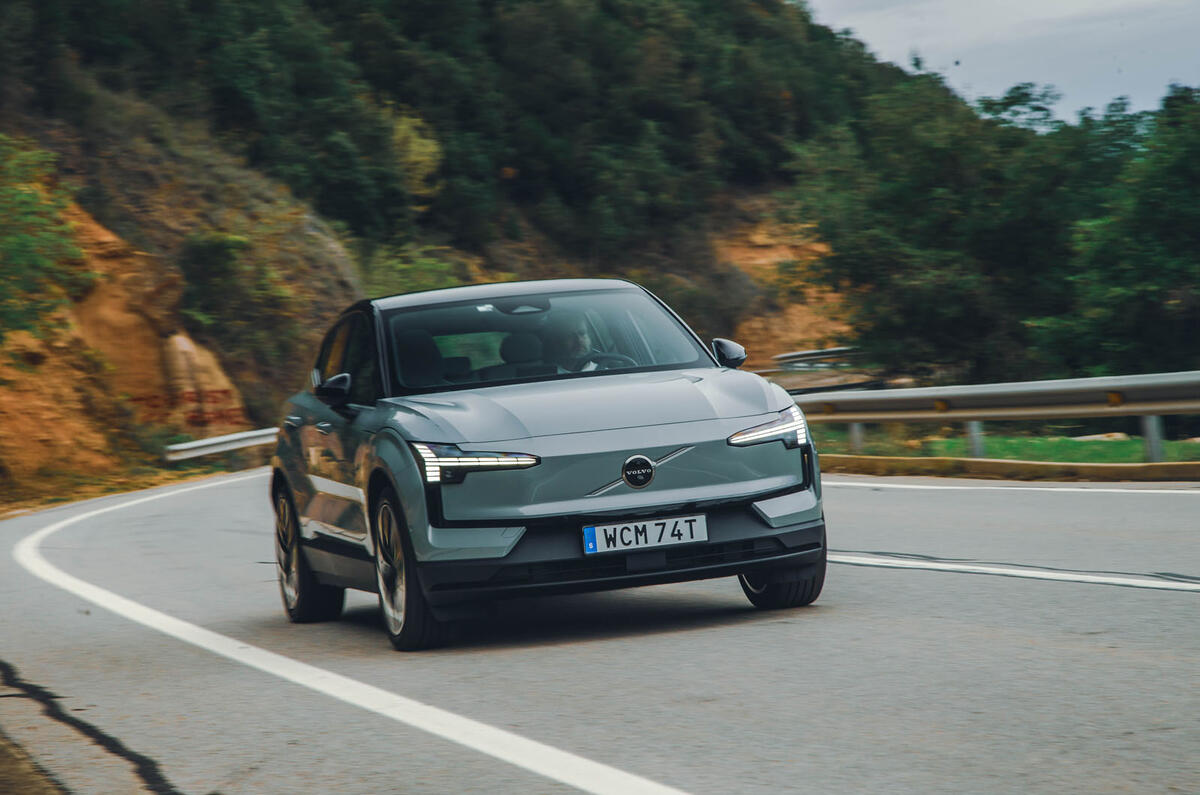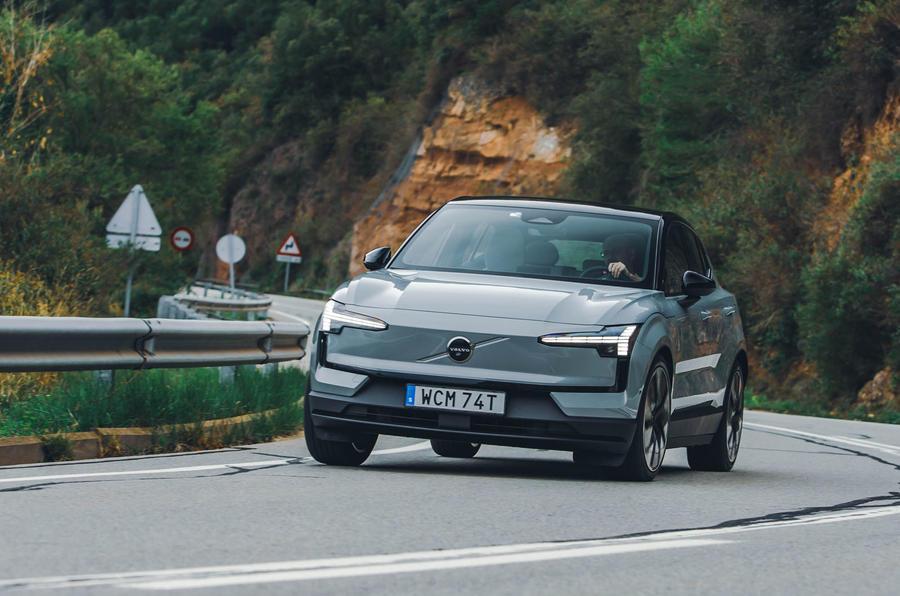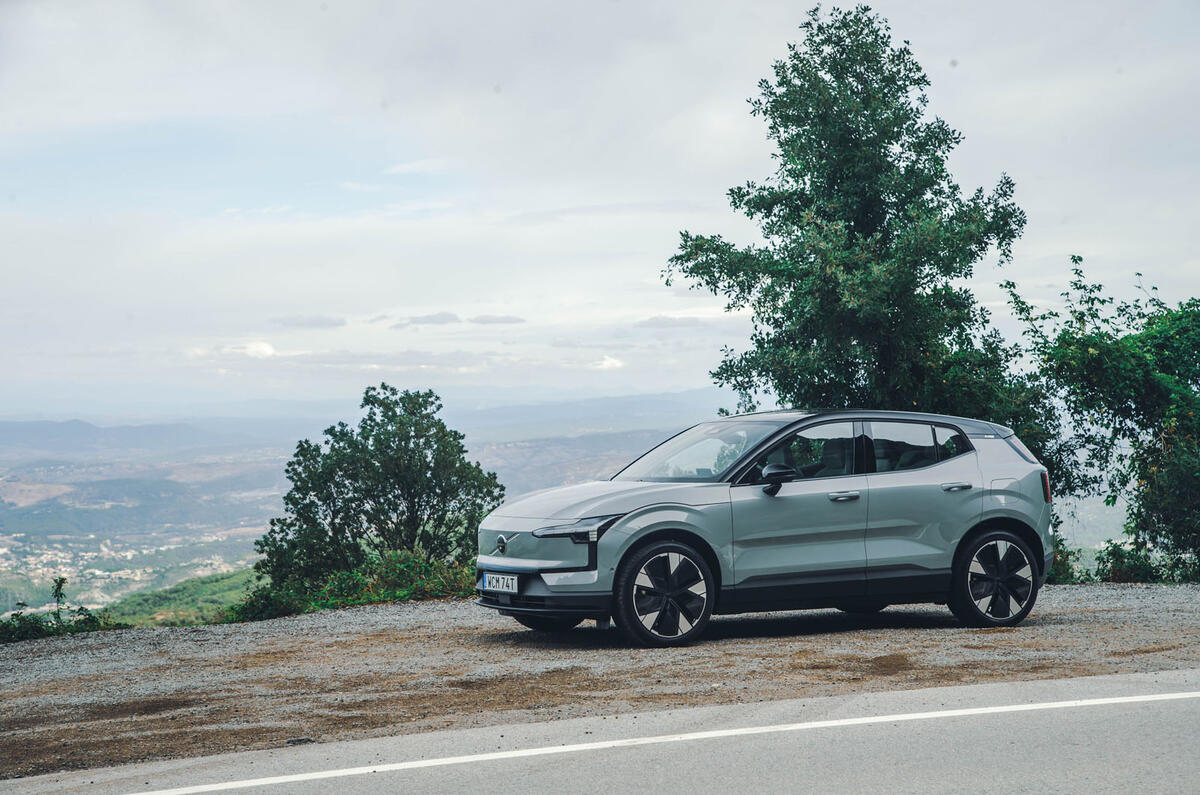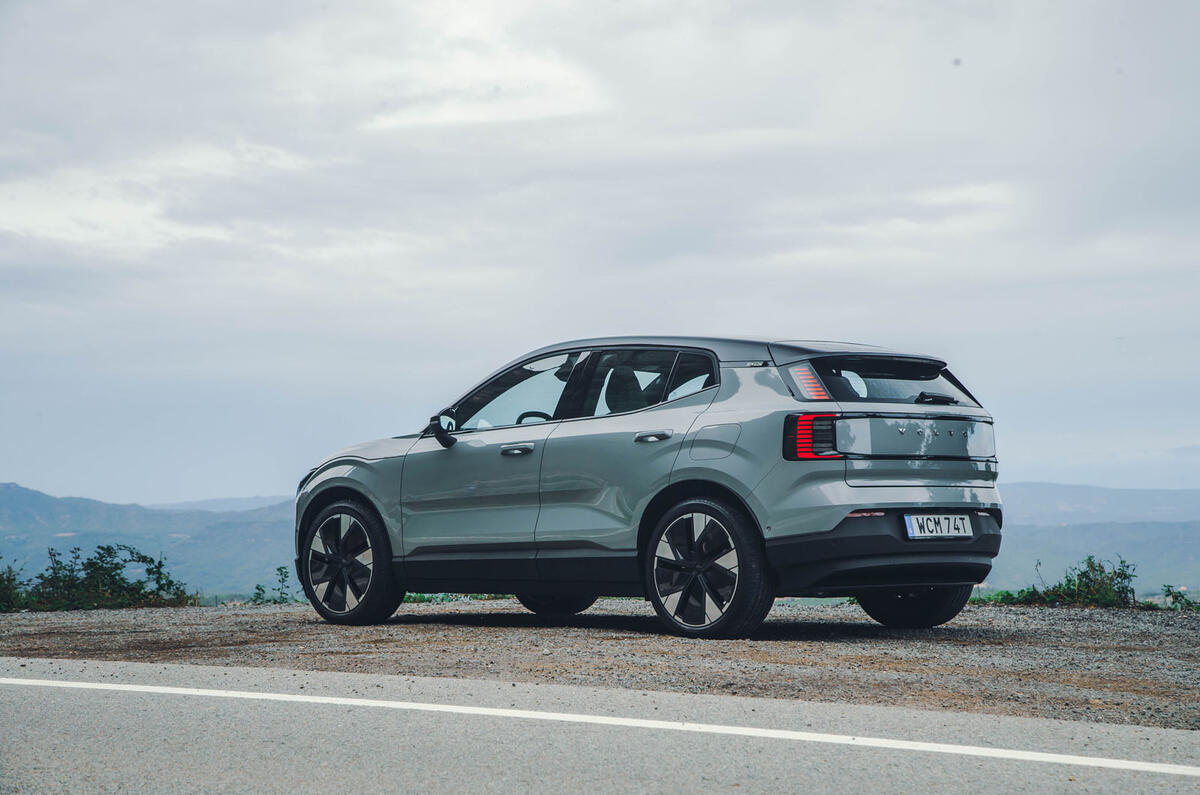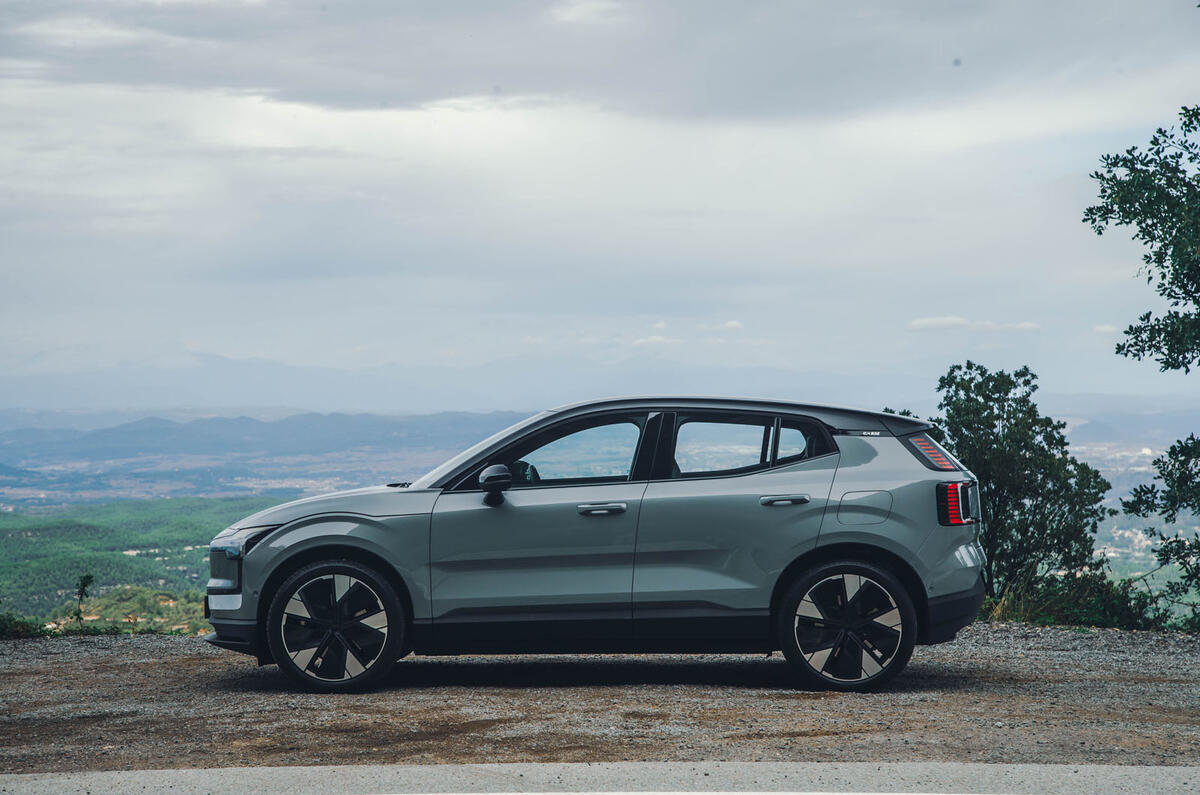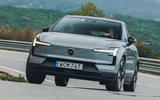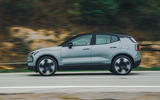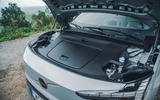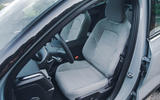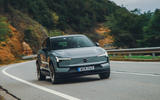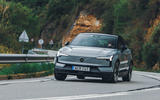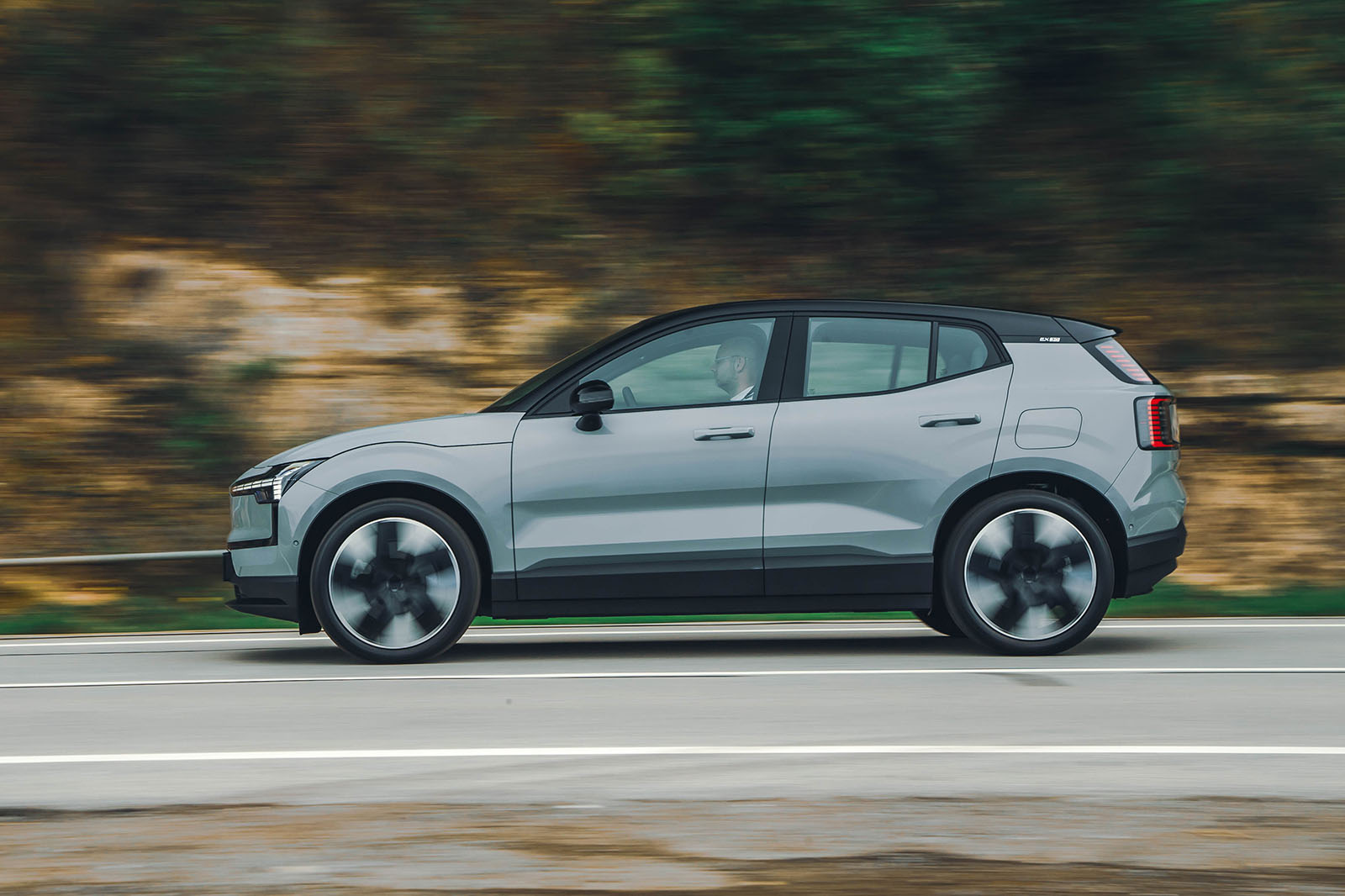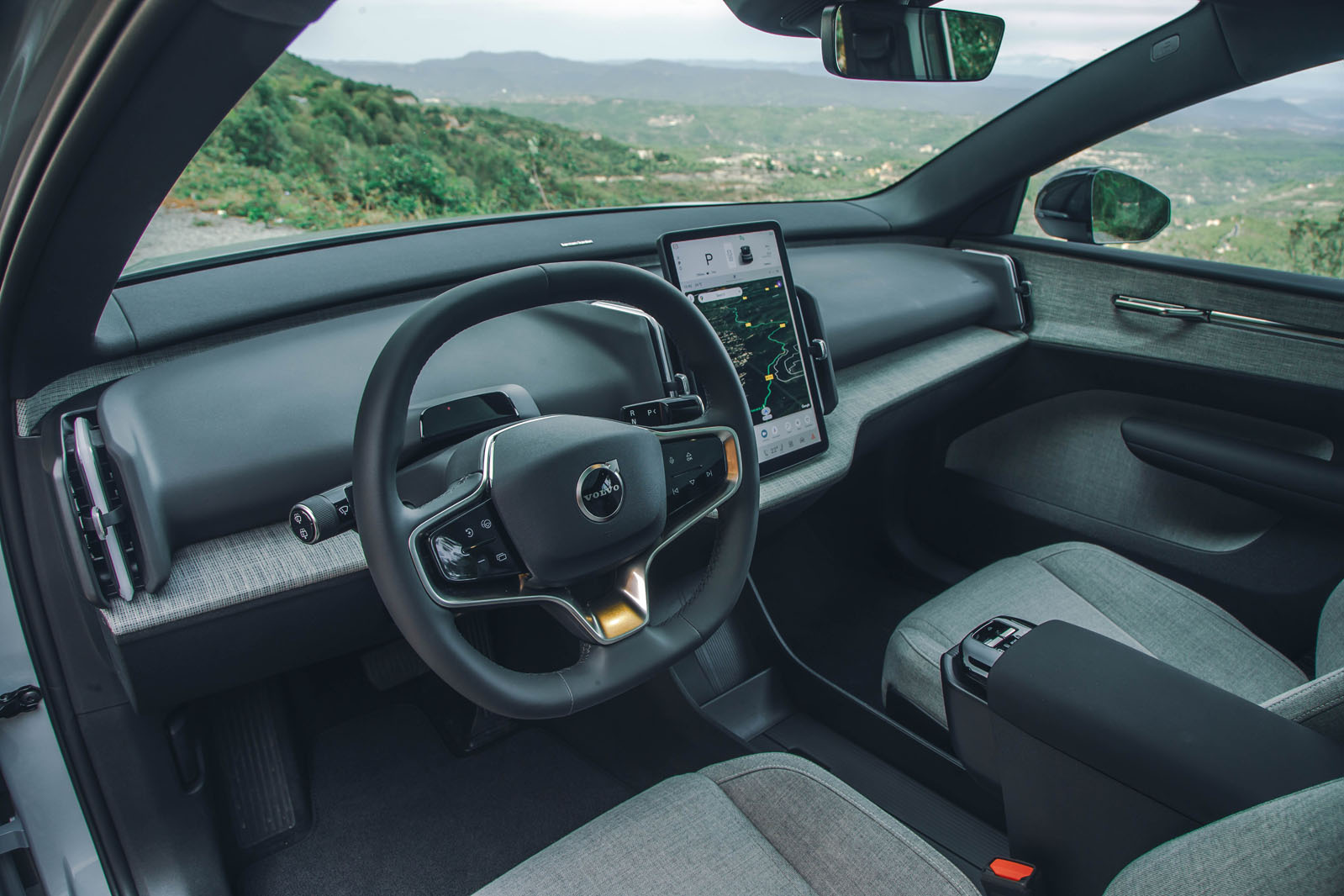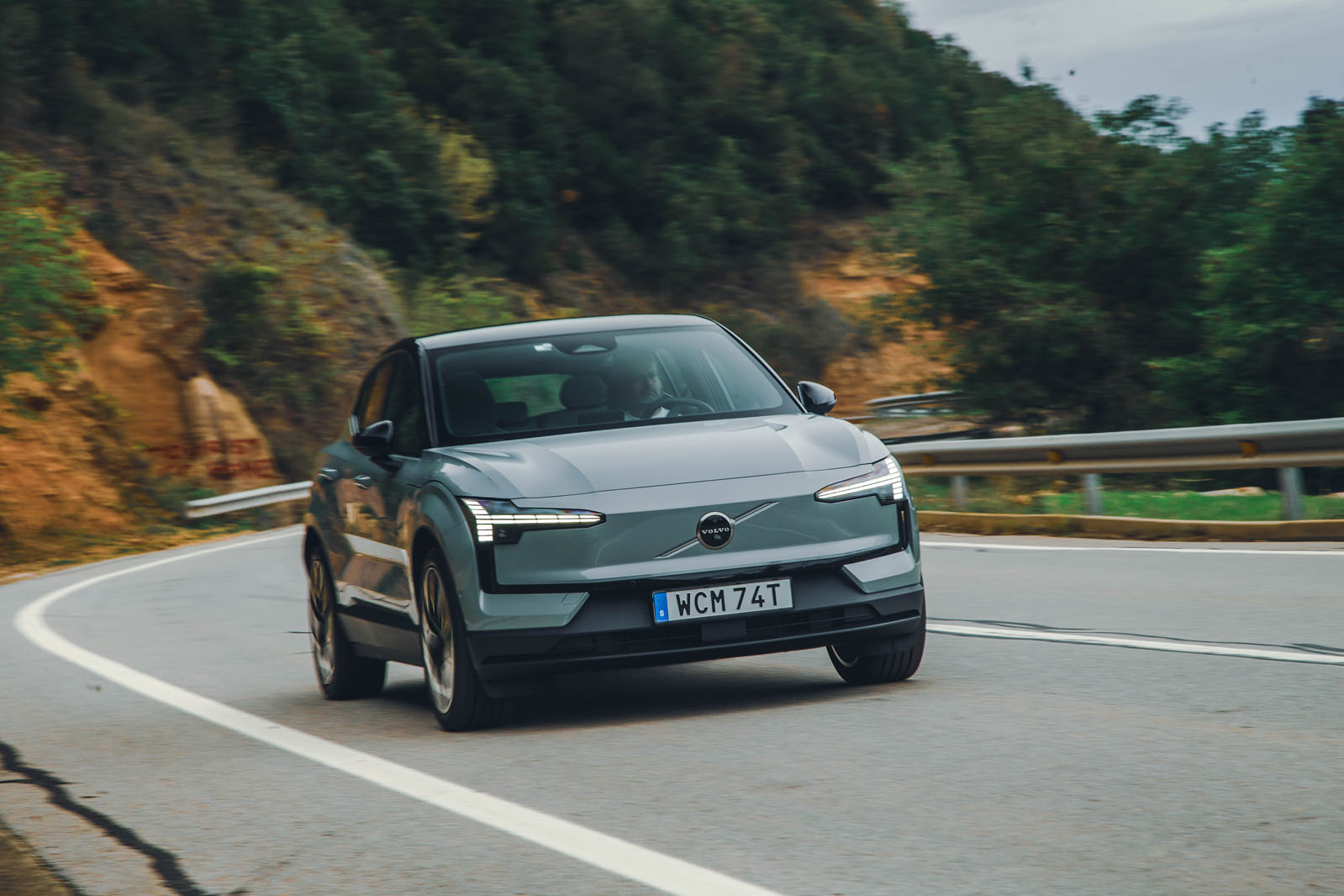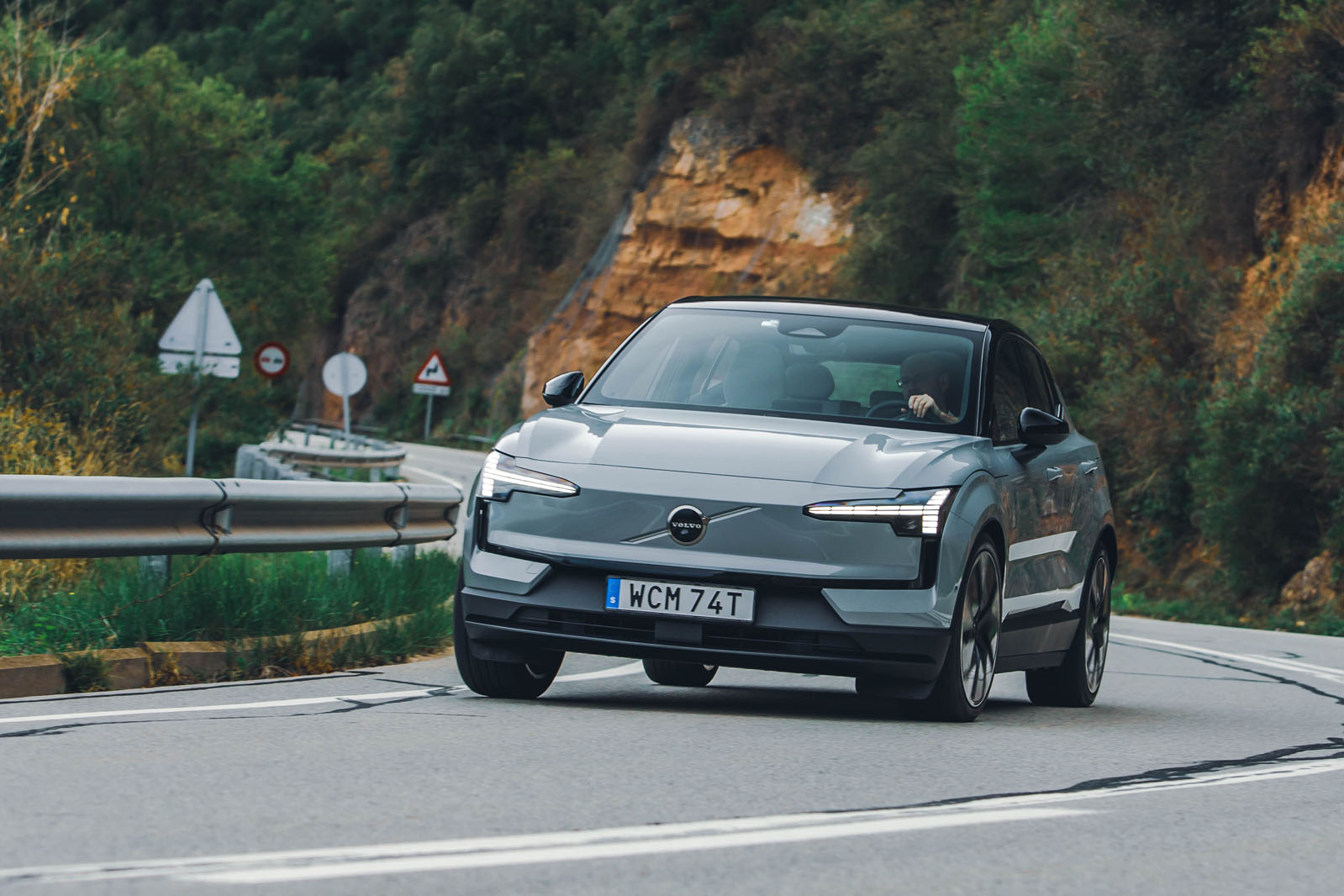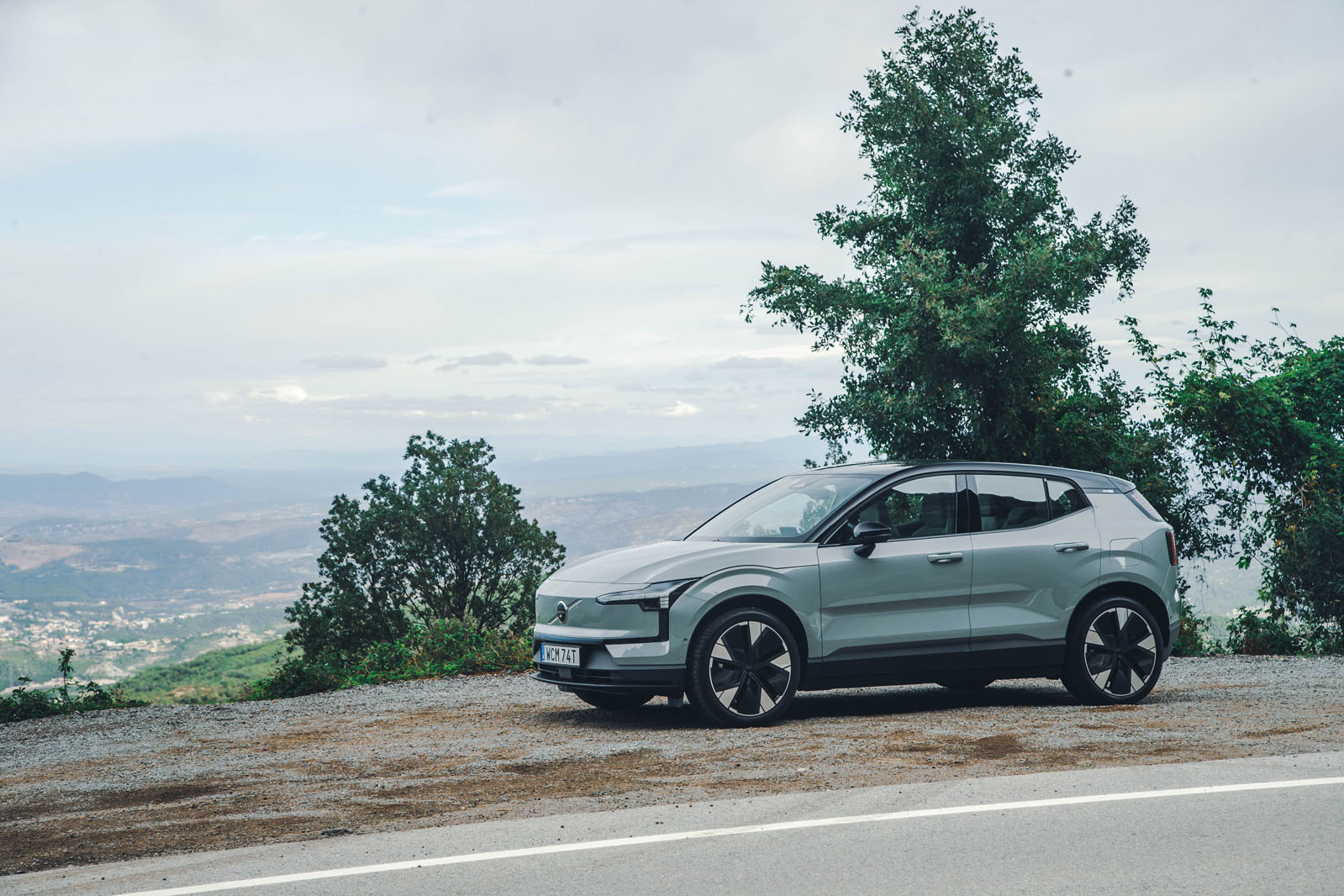Inside the EX30 is clean, crisp, light and airy. There are fine material choices, seemingly well assembled, with lots of storage space, great cubby design, decent roominess front and rear. Lovely air vents, too. But it’s inside where the problems start. Mostly where they end, but by that time they may be insurmountable. They would be for me.
Volvo has gone touchscreen heavy. More so even than next-generation Polestar, which is saying something. This Volvo has physical switches only for the front windows (a supplementary button makes them operate the rears), the door locks (though this is a haptic pairing on the centre tunnel rather than feelable physical items) and, on the ceiling, for the emergency and hazard warning switches which it’s obliged to have.
The left-hand column stalk deals with indicators and wipers. The right stalk is the gearshift. Steering wheel haptics control audio or cruise control. Everything else is operated via the central touchscreen: lights, unforgivably up to and including foglights (two menus away from the home screen); wiper sensitivity; glovebox (on the home screen [!] but small); door mirrors (two); climate (one push for temperatures, a different push for circulation/demisting); heated seats (on one of these menus, but which one? Exciting!); audio (push once for volume, once again for detailed volumes, and the separate apps menu for source); driver assistance systems (three pushes); one-pedal driving (one)... You get the idea.
When static, you can learn it. When in motion, it’s as difficult and distracting as you might expect. Jack, behind the camera, said he has never seen me so cross as when I was demonstrating its functions for our video, and given he’s seen my reaction to big wheely bags pretending to be hand baggage on aeroplanes, that’s saying something.
Most manufacturers are sensing the temperature on this trend and starting to back out it: Volkswagen has admitted being stung by criticism of its systems, Skoda has promised rotary controllers, Renault some years ago said that retaining physical controls for climate control was a “mature” decision.
And yet Volvo, the car company that wants to be the world’s most responsible, which gave the world the seat belt, puts safety and responsibility as its guiding tenets, which limited its cars to 112mph and its engines to no more than 2.0-litres and walked away from diesels before most of the world, gives us an interior as frankly unusable on the move as this. I’d say it’s unacceptable, but like so many cases, the word is overused and, clearly, ineffective: they’ve done it.
Sorry to labour the point but when I got back into a Genesis G70 after driving the Volvo, I adjusted the mirrors, temperature, heated seats, heated steering wheel and auto wiper sensitivity all by feel on the way out of a car park. Had I tried adjusting those on the move in the EX30, I’d have driven it into a wall. Although after three hours of operating one, that seemed like a tempting option. The road testers see more of these systems than me. Perhaps they’ll think less badly of it in the scheme of it. But for now, I struggle to look past it.
It’s important to separate two issues here too. A separate factor is the latest set of ‘GSR2’ EU safety legislation, such as attention assist, which Volvo must incorporate into its new cars. Volvo engineers “don’t know” if attention assist works well enough (it doesn’t) but admits that the principle and the ambition are noble. And Volvo’s adaptation is better than, say, Hyundai’s. There are some false positives – if you’re looking around you in traffic it’ll tell you to pay attention, when that’s precisely what you are doing – but it’s a subtle ping, more easily forgotten, or switched off.
But the second part – the user experience – is all Volvo’s choice and all its own inexcusable doing. Head of safety Thomas Broberg says that the company’s safety experts are “just engineers” and should be “humble” about designing the user interface. I say his teams have done it soundly for decades and that this is not an area where they should become beholden to tech bros who seem to have never asked the question: “Would you like us to make it harder for you to adjust the mirrors, open the glovebox, or switch on the fog light?”





